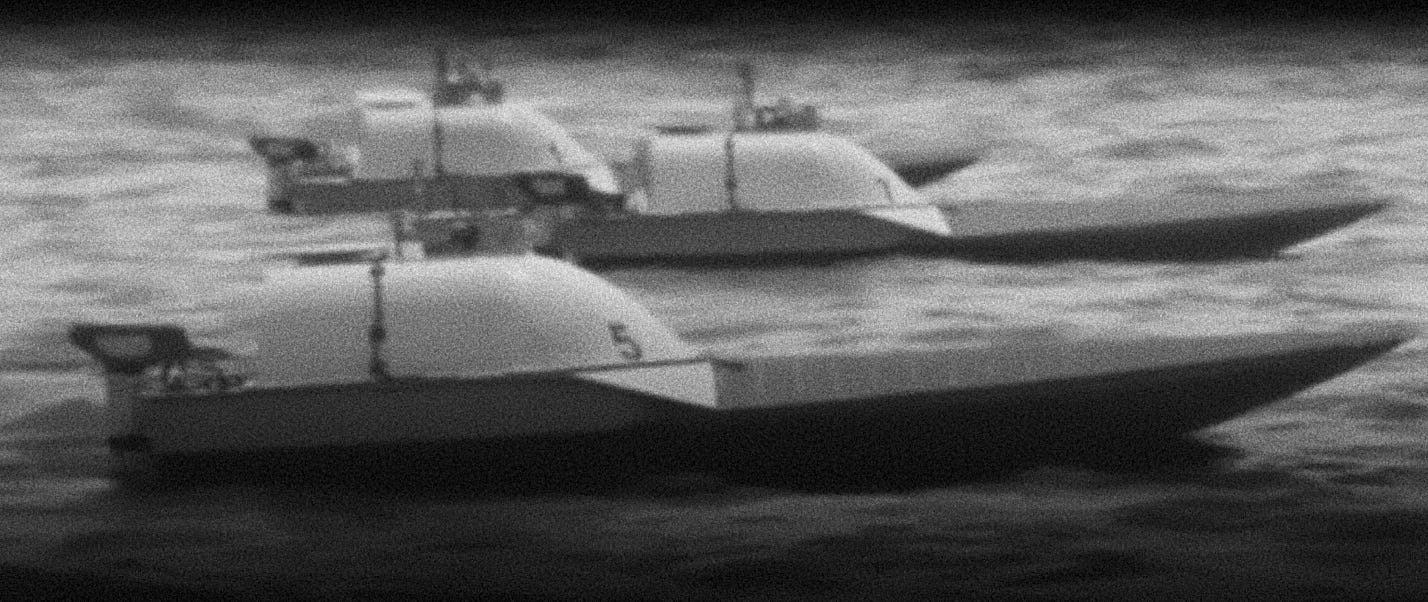Startup HavocAI Bets Big on Autonomous Naval Drones, Eyes 100-Foot Platform by Year’s End
An AI startup layers software over hardware for advanced watercraft.
HavocAI is moving fast. In just 18 months, the naval drone startup has built 42 autonomous surface vessels and delivered most of them into U.S. military hands. Now, the company is preparing to scale—literally. By the end of this year, HavocAI plans to launch a 100-foot uncrewed surface vessel (USV), a major leap in platform size and mission potential for a startup that’s proving it can do both software and deployment at speed.
“We’re going to take a 42-foot vessel built for the Pacific and make it autonomous—and collaborate with our small USVs to do missions,” said CEO and co-founder Paul Lwin to DefenseOne. “By the end of 2025, we’ll put a 100-foot USV into the water.”
The company’s pitch is simple: rather than build boats from scratch, it builds the autonomy layer—dropping its software onto a variety of hulls. From pontoon-style landing boats to purpose-built craft, HavocAI is demonstrating the flexibility of its system in real-world military exercises, including the Army’s Project Convergence.
Scaling Fast—and Smart
The startup is now operating in partnership with PacMar Technologies, applying its software to 38- and 42-foot vessels optimized for Indo-Pacific operations. But HavocAI’s real value proposition isn’t hardware—it’s teaming. All vessels in its growing fleet, from 14-foot ramp launches to the upcoming 100-footer, run the same control software and can operate as a coordinated unit.
Lwin demonstrated this in a recent simulation: eight drone boats responded in real-time to search for a target across a designated ocean segment. The long-term vision? Swarms of 1,000 small boats paired with 100 larger ones—a distributed, software-defined maritime fleet that can support strike, ISR, EW, and deception missions at a scale that traditional platforms simply can’t match.
From Vision to Program of Record?
With uncrewed vessels gaining momentum in the Pentagon, HavocAI’s timing is sharp. Congress is preparing to commit billions in funding to USV development and procurement. The Senate’s budget blueprint sets aside $1.5B for small USV production and $2.1B for medium USV development. These are not science projects. Startups that can show mature autonomy, manufacturing readiness, and combat relevance are being taken seriously.
For HavocAI, the upcoming 100-foot vessel is a proving ground. The company is working closely with prime contractors to integrate legacy missiles and targeting systems into a fully autonomous platform. “The challenge is coming up with the autonomous behaviors to make those 42-foot vessels a weapon,” Lwin said. “And doing human-machine teaming in what the Navy is calling the hybrid fleet.”
Strategic Edge in a Missile-Dense Theater
As naval planners look toward the Indo-Pacific, endurance and payload capacity are driving design decisions. “Sometimes you're going to want large payloads,” RAND's Scott Savitz noted, “whether that’s launching smaller vehicles or carrying substantial weapons.” A 100-foot USV doesn’t just carry more—it enables destroyers to operate further from risk.
A $100,000 USV forcing an adversary to use a $1M missile is a tradeoff Lwin thinks about often. “If a DDG goes close and the missile hits it, that's 150 people’s lives lost,” he said. “But if you swarm with USVs first, gather targeting data, and make the enemy waste munitions, the DDG arrives informed—and intact.”
What Startups Should Watch
HavocAI’s approach—modular software, scalable fleet architecture, aggressive testing—is a case study in how defense startups can move faster than traditional programs. But it’s also a reminder of the risks ahead: weapon integration, autonomy that can handle complex missions, and the challenges of operating at sea without direct human oversight.
Still, the company is pushing hard to meet those benchmarks, and the Navy is watching closely. If HavocAI can deliver on its roadmap—and keep its systems modular, reliable, and adaptable—it could become one of the first breakout startups in the U.S. naval autonomy space.


